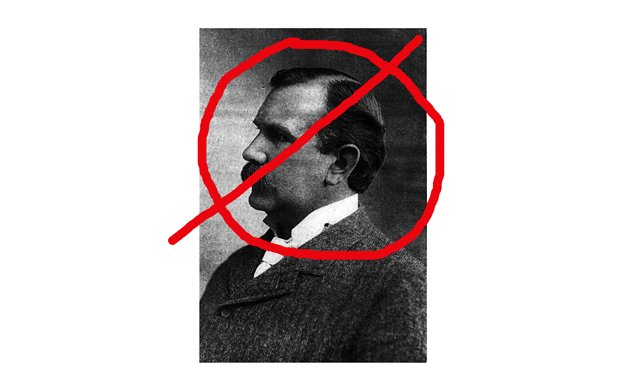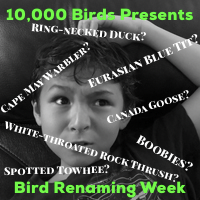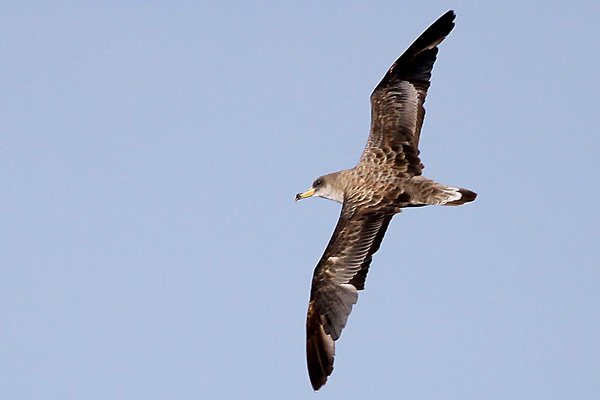
Cory’s Shearwater is missing a letter. One little “e” is absent from the name and it has been driving me crazy ever since I learned there was a shearwater that almost shares a name with me. Adding one little “e” won’t hurt at all. It doesn’t change the pronunciation, the four-letter banding code, or much else at all. But it would make me very happy and would remove an honor from a guy who really doesn’t deserve it.
Charles B. Cory is perhaps the worst kind of person after whom you could name a bird. He was a man whose father became rich as an importer and because of his father’s support (and, later, his inheritance), he never had to work a job in his life. Instead, he led a life of leisure: playing billiards and golf (he competed in the 1904 Olympics as a golfer but somehow didn’t finish the course), traveling, and amassing a massive collection of dead birds, over 19,000 all told. The shearwater’s common name is “Cory’s” because Cory was the first to realize that it was a species in its own right and publish. Well, that and he was one of the founding members of the American Ornithologists Union (and an early president of that organization) and they chose what common names are attached to what birds so it’s no surprise that he got the nod.
CorEy’s Shearwater
But it gets worse! Not only was he someone who owed his entire ability to be an ornithologist to his dad’s cash and not only was a bird named for him just because he was part of a literal old boys’ club but his lifetime overlapped with the nascent bird conservation movement of which he had no desire to be a part. Apparently in 1902 he was asked to address an Audubon Society meeting. He refused, saying, “I do not protect birds. I kill them.”*
Do we really want a bird to be named after a man who was proud of killing birds instead of protecting them? A man who was born on third base and apparently thought he hit a triple? A man who couldn’t even finish a round of golf in the Olympics? No! Definitely not!
Sadly, I haven’t been able to come up with a better name for the magnificent creature currently named after a Boston Brahmin who liked to shoot things. So, as a stop gap measure, let’s just add that “e” in there so it will be clear that the bird is not named for Charles B. Cory but for some other Corey. It could be Corey Haim. Or Corey Feldman. Or Corey Taylor. Really, any Corey. After all, we all know that Coreys are amazing! I have no personal stake in this matter at all and will continue to do my best to come up with some other name for Corey’s Shearwater. I’m sure I’ll figure it out really quickly. I’m working on it already.
*I found this quote in Scott Weidensaul’s Of a Feather: A Brief History of American Birding but his end notes show he found it in Mark Barrow’s A Passion for Birds.
…..
 Most birds were named by now dead white men who didn’t appreciate that most of the species they were “discovering” had already been discovered and had names. Most of the birds so named were named by men with the dead remnants of a bird in their hand and often the men doing the naming had never seen the bird in life. Geographic, honorific, horrific, and overly specific names abound much to the detriment of those who would like names to actually fit the creatures being described. And we poor birders have to use those names because otherwise no one will know what bird we are checking off our list and bragging about having spotted to fellow birders, bored families, and unimpressed romantic interests. Well, no more! We here at 10,000 Birds have decided to right some wrongs and improve the birding world by renaming birds the way they should have been named from Linnaeus to the present. (Or, at least, pointing out some names that suck.) Welcome to Bird Renaming Week, our week-long exploration of the names we put to birds and how they can be improved!
Most birds were named by now dead white men who didn’t appreciate that most of the species they were “discovering” had already been discovered and had names. Most of the birds so named were named by men with the dead remnants of a bird in their hand and often the men doing the naming had never seen the bird in life. Geographic, honorific, horrific, and overly specific names abound much to the detriment of those who would like names to actually fit the creatures being described. And we poor birders have to use those names because otherwise no one will know what bird we are checking off our list and bragging about having spotted to fellow birders, bored families, and unimpressed romantic interests. Well, no more! We here at 10,000 Birds have decided to right some wrongs and improve the birding world by renaming birds the way they should have been named from Linnaeus to the present. (Or, at least, pointing out some names that suck.) Welcome to Bird Renaming Week, our week-long exploration of the names we put to birds and how they can be improved!
…..





 New writers welcome – please contact us for details.
New writers welcome – please contact us for details.

















I found the original Cory quotation, “I do not protect birds. I kill them” in “Adventures in Bird Protection: An Autobiography,” a memoir by Thomas Gilbert Pearson, a co-founder of the National Association of Audubon Societies (now National Audubon). Pearson early in his career was attending annual meeting of the AOU in Washington, D.C. and was walking into the building behind an “elderly gentleman.” The gentleman was handed a piece of paper by an second gentleman, and Pearson overheard an exchange in which Cory (the elderly man) asked Harry Oberholser (the second man) what the piece of paper was. When informed that it was an invitation to a meeting of the Audubon Societies and that their purpose was to protect birds, Cory replied with his now infamous words. (Weidensaul appears to have misread Barrow’s summary of this exchange, which is why an author always needs to go to the source!)
Pearson mostly writes about his struggles to protect birds in North Carolina and the U.S., but his words in the same chapter as the Cory story struck me as sadly indicative of what kind of world this was: “Through the veins of virtually all [his Normal School students] there flowed the pure blood of the Anglo-Saxon….the best that North Carolina could produce.” (https://catalog.hathitrust.org/Record/001508131)
It’s ok to name people after birds, but hell no in naming birds after people.
So Jochen’s Shearwater is out of the question?
The vast majority of Calonectris borealis breed on Portuguese-speaking islands and they winter predominantly off the coast of Brazil (also Portuguese-speaking). Drop the whole Cory-thing and call them “cagarra”. Nice and simple.Naming them in English after their “discoverer” is nonsense anyway – we give animals and plants scientific names for a reason.